Vintage Porsche 911s: Our Top 6 Picks
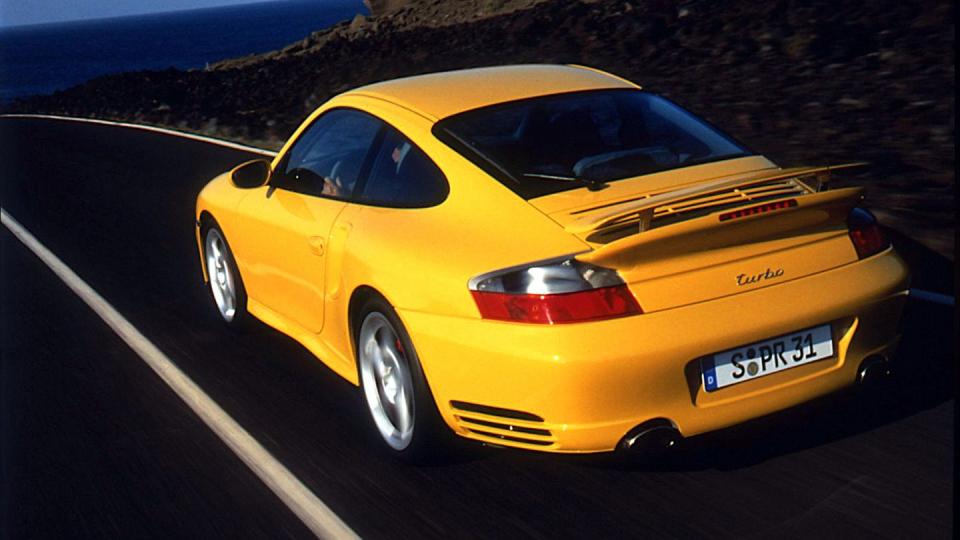
A vintage Porsche 911 is the coveted dream car for many enthusiasts. With ballooning prices in recent years, 911 ownership has drifted out of reach for some or forced them to alter their purchase strategy. Others, perhaps, have been motivated to get on board before it's too late.
As director of auction production for Bring a Trailer, Alex Porter has a front-row seat from which to view the market for classic 911s. And as a 911 enthusiast, he takes a particular interest in those cars. "I'm 40 years old, and when I was a mechanic in my early 20s, I remember SCs and 3.2 Carreras being $10-20k cars, even the really nice ones," he says. "All the classic 911s are relatively robust and easy to use compared to other cars of their eras. That drivability and durability means the cars got
used a lot when new, and so there are a limited number of great cars left. And they will likely continue to be the top choice for enthusiasts who want a classic car they can actually drive a lot. That drives prices upward—get yours now."
But which one to get? Because 911 has been in continuous production for more than 60 years, there are multiple generations, several different body style, and numerous variations. The following are our top choices in today's market.
911SC, 1978–1983
Introduced in 1978, the SC features the upgraded 3.0-liter engine (930/03), which made 180 horsepower (172 in California). Earlier 911s may be cheaper, but beware of rust-prone specimen built before model year 1976, when Porsche introduced galvanized sheet metal for all load-bearing parts. Corrosion can still be an issue in A- and B-pillars, door sills, headlight pods, axle mounting points, and around the box- section bumper deformation elements. Engine-wise, slack chain tensioners, porous heat exchangers, worn valve guides blowing blue smoke, and broken stud bolts (notorious on pre-1976 models) are the main potential worries.
Spare parts are still easy to find but expensive when purchased from dealers. Properly maintained, early 911s can be reliable daily drivers that are bound to turn more heads than their modern counterparts, particularly in loud period colors. Stepping out of a 992 and into one of these cars for a Sunday morning drive is an exercise in time travel. Operating the heavy clutch paired with a bony transmission, modulating the instant-on brakes, and coming to grips with the unassisted steering that's rather vague around the straight-ahead position may be a haptic shock to the digital generation. But as far as the total immersion of man and machine is concerned, no other period sports car matches the icon from Zuffenhausen.
Prices
Looking at BaT, the bulk of these 911s sold in the last 12 months was in the $40-70K range. Backdated cars inspired by Singer and friends, high-performance conversions, extra-low-mileage specimen, widebody specials, limited editions, and offbeat color and trim combinations can fetch a premium so, for a change, originality is not of the absolute essence here. Having said that, clean factory-correct examples with zero aftermarket elements are probably still the ones to go for.

911 Carrera 3.2, 1984–1989
Arguably the most desirable classic 911 was launched in 1984 in all three body styles: coupe, Targa, and drop-top. The Speedster, of which only 2103 were made (among them 171 narrow-body versions), joined the 911 family in 1987. Why choose the 3.2 over the SC? Because the bigger displacement engine features a potentially life-saving hydraulic timing-chain tensioner along with more power, namely 207 horsepower (217 horses starting in 1986) paired with 195 pound-feet of torque.
Model year 1987 saw the introduction of the quieter and smoother-shifting five-speed G50 transmission. The Turbo, which returned to the U.S. in 1986 after a six-year hiatus, retained the short-legged four-speed until late 1988. Which body style to buy? The coupe is largely trouble-free, and so is the Targa, though it may need a new set of seals after a decade or two of hard use. Cabriolets kept in sunny climates are prone to excessive UV-induced wear (think cracked dash, worn upholstery), occasional issues with the convertible-top mechanism, which can break near its mounts, and, from July 1987 onwards, exhausted electric motors.
Prices
The spread starts around $40K for a high-mileage car with several owners and a patchy history. $60-70K should buy a decent car with under 100K miles and no immediate expensive needs. Coupes, convertibles, and Targas command similar numbers—the real deciders here are condition, history, equipment, and color. Anything that costs six figures better be pristine, exceptional in appearance (think paint-to-sample, which was available from 1978), rare, or a combination thereof. Professional restomods, factory slant-nose jobs, and few-offs can cost $150K and more.
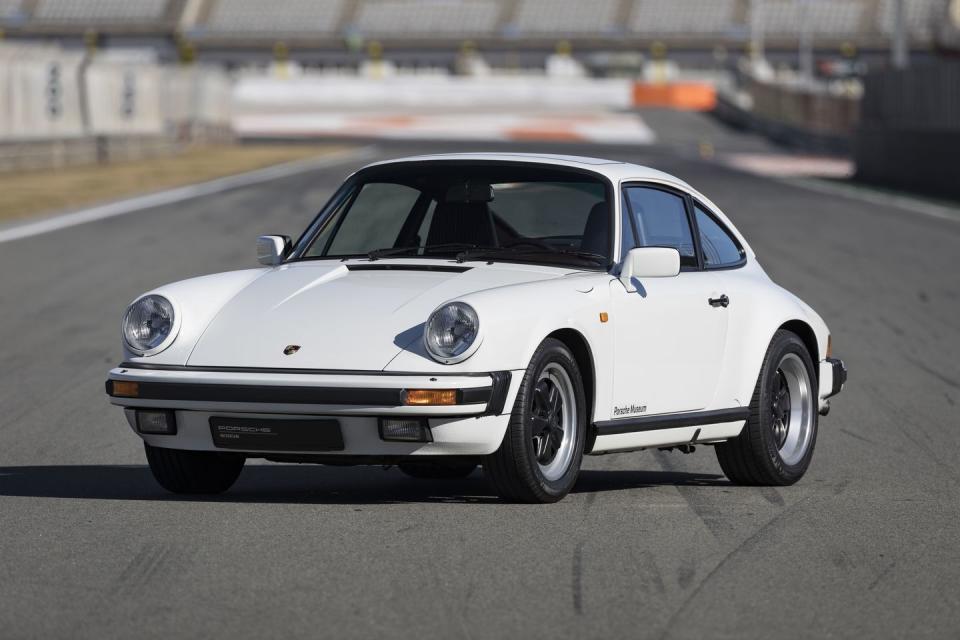
964 Carrera 2, 1990–1994
The 964 is probably the most practical and best value neo-vintage 911. Why? Because 85 percent of the parts were all-new, most importantly the switch to power steering, which makes this 911 a much easier drive around town and in stop-and-go traffic, and anti-lock brakes. But think twice before opting for the other key innovations, namely the highly complex and accordingly capricious all-wheel-drive system and the not overly popular four-speed Tiptronic transmission that adds convenience but saps quickness and involvement. The interior was by and large a carryover affair, but the revised suspension ditched the torsion-bar layout for damper struts up front and coil-sprung semi-trailing arms in the rear.
Dynamically, the 964's chassis was in a different league. Throughout the 1988–1993 life cycle, the base engine remained the same high-compression twin-spark 3.6-liter unit good for 250 horsepower and 229 pound-feet, which propelled the C2 in 4.8 seconds from 0 to 60 mph and on to a top speed of 161 mph, thereby nearly matching the previous-generation Turbo. More displacement meant more torque, which improved the second- and third-gear acceleration and permitted longer legs in fifth. At the same time, the M64 engine was quieter, more refined, and less thirsty when pushed. Well maintained (valve timing, twin distributor, the timing chain and its guiding blades need to be checked or replaced at regular intervals), this engine is reportedly good for 200,000 miles without a rebuild.
Prices
Finding a clean, well-maintained accident-free manual 964 C2 is not easy—even if your budget stretches north of $75K. Although 63,762 units were built in total, rather too many rolled off the line with the wrong specification, and out of the survivors, too many fell prey to aftermarket butchers. It doesn't help either that the 964 has become the darling of the up-market conversion industry. There are good cars out there priced between $70K and $90K, and very good ones costing a little over $100K, but special paint colors, and Targas in particular, are frustratingly thin on the ground even if you're willing to travel and spend.
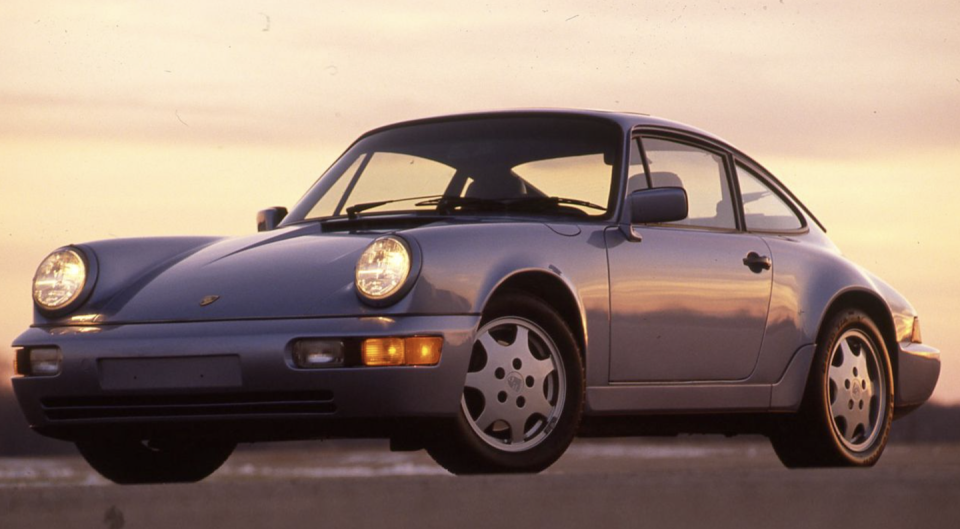
993 Targa, 1996–1998
When Porsche first trademarked the Targa name, the concept consisted of a sturdy roll bar behind the seats, a detachable roof panel, and a wraparound rear window that was soft plastic and removable in the original models. The evolution of the Targa principle in the 993 and the 996 generation is devoid of all these elements. Instead, this body style, which was based on the convertible, consists of a frameless full-width glass panel that slides back between two roof rails to double up with the rear window when open, creating a sandwich of dubious transparency. It therefore offers the best or the worst of both worlds, depending on your point of view. Rarity certainly is a positive factor, as are head-turning ability and strong resale values. Launched Stateside as a 1996 model (two years after the 993-generation coupe), the Targa is powered by the very last air-cooled flat six, a 282-hp 3.6-liter engine good for a top speed of 161 mph.
The 993 is allegedly the most reliable 911 ever, with virtually no corrosion issues, undemanding long-lasting engines, and very few detail niggles—a paragon of longevity. Lack of maintenance and poor accident repairs are just about the only imponderables here. Again, it's best to avoid the Tiptronic, which still had only four forward gears. AWD was not available for the Targa, but the limited-slip diff and the Litronic (xenon) headlamps are worthwhile options. Cars pampered by the Porsche Exclusive division typically fetch a premium, but some factory modifications, like wood trim stained odd hues and color-matched leather upholstery can be an acquired taste. Despite the trick sandwich roof, the Targa—like all 993s—feels as if it were hewn from solid rock, even though fully equipped cars barely touch the 3200-pound mark. When pushed, the new multilink rear suspension, wider rear wheels, revised power steering, and fifth-generation ABS easily outshine the 964. The Varioram forced-induction system boosts the maximum torque from 221 to a beefier 250 pound-feet.
Prices
Since this body style has never been the darling of the tuning fraternity, add-on aero, blingy wheels, and lowered suspensions are thankfully the exception. Good cars are hard to find, but they do exist, like a 1997 six-speed beauty that sold on BaT for $74K in March, an Arena Red 100K-miler that changed hands in September for $72K, or a comparably equipped Midnight Blue one tagged at $70,500. Even more money buys lower mileage and fewer owners, but again condition is everything—fixing a leaking or stuck power-operated glass roof requires money, parts, and expertise, in that order.

996 Turbo, 2001–2005
The cheapest 911s you can buy today were built from 1998 to 2004, when the rear-engine icon (code-named 996) was paired with the mid-engine Boxster (986) under the cost-conscious regime of Wendelin Wiedeking. This strategy may have pulled Porsche away from the brink financially, but the first batch of 996s produced until summer 2001 are to be taken with a shovel of salt. For a start, early water-cooled boxer engines (M96) went through cylinder liners at an alarming rate, suffered from seized intermediate shaft (IMS) bearings, and were prone to leaky coolant-expansion tanks, to name only the most common maladies. The Turbos and the GT models were spared because they used completely different, notably stiffer engine blocks.
The artificially aspirated 3.6-liter "Mezger" flat-six developed 420 horsepower when it was launched in 2000. All-wheel drive was standard, the Tiptronic was an option. Now, finally, a five-speed, it was for the first time an acceptable choice, especially for the flagship model that produced a feisty 413 pound-feet of torque at a leisurely 2700 rpm. In 2003, the Turbo cabriolet went on sale. The 450-hp Turbo S followed for 2005, but it didn't accelerate any quicker and was only 1 mph faster overall. Although the design was freshened inside and out as part of a 2001 facelift, the materials used throughout the cabin (ho-hum plastics, short-lived thin hide, tacky fake metal) were still borderline. A full-leather trim covering dashboard, door panels, and headliner is the best protection against UV rot and excessive wear.
Prices
996 Turbos with under 30K miles for around $65K? They're out there. Having said that, it is worth noting that the brawniest 996 is these days only about $15K less expensive than the 500-hp 997 Turbo. Of course, there are dozens more choices in the $70-100K bracket, among them paint-to-sample one-offs, low-milers with the 444-hp X50 factory power upgrade that arrived in 2002, and a few ultra-rare S editions boasting the full Porsche Exclusive treatment. Coupes and cabriolets cost about the same. Deduct approximately $10K for the Tiptronic transmission.
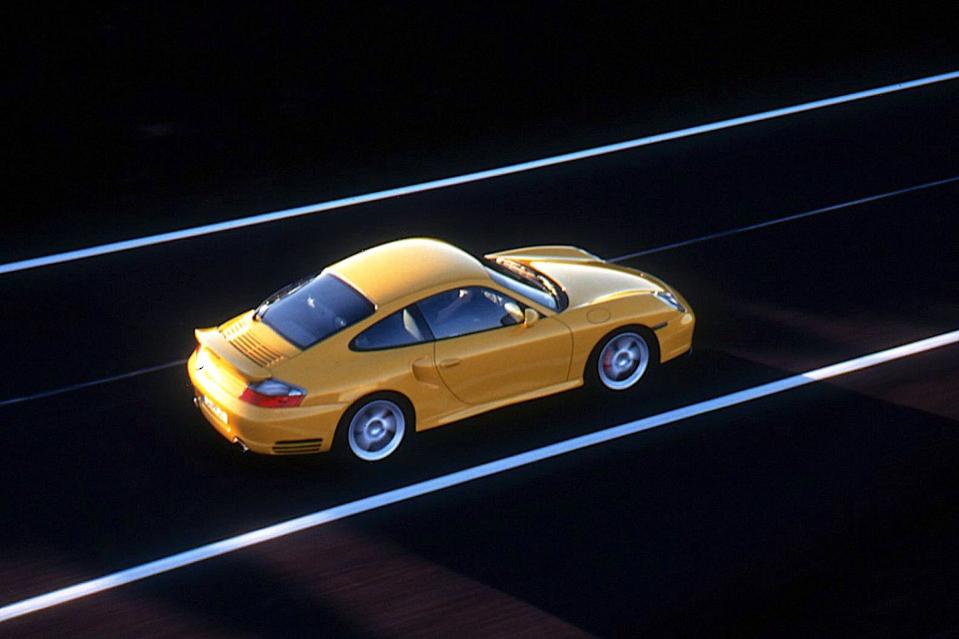
996 GT3, 2004
The GT3 shares the bulletproof 3.6-liter engine with the Turbo, which is good news for secondhand buyers. The first GT3 launched in 1999, but it never came Stateside. U.S. buyers had to wait until the face-lifted version (unofficially, 996.2) that arrived in 2003 as an '04 model. The bespoilered beast epitomized the GT formula for success that's still valid today: a high-revving naturally aspirated engine redlined at 8200 rpm, a close-ratio six-speed manual gearbox, lightweight body and suspension, decontented interior, optimized aerodynamics, and an uprated chassis and brakes. Unfiltered and free of artificial additives, the GT3 is a raw and pure experience for true enthusiasts. Noise, vibration, and harshness are must-have ingredients here.
Driving the GT3 is believing. With 375 horsepower, the car is very quick even by modern standards (to 60 mph in 4.0 seconds), and at 188 mph, it still owns the fast lane on the autobahn. Unlike the C4S, which lacked front-end downforce and thus directional stability, the aerofoiled sibling model stays firmly planted at high speed, is dizzyingly playful through the twisties, and puts the road into the sweaty palms of its happy driver. But beware of fakes: The GT3 pack was available for any 996, and cloned engines are no rarity either.
Prices
Only six 996 GT3s sold for $100K or less on BaT in 2023. The same number of cars went for between $101-150K. Most of them were painted black or silver. Rare colors tend to bring higher prices, as do costly options like wall-to-wall leather or carbon-ceramic brakes. There are a few one-owner, low-mileage gems out there, but they are bound to drain the budget. Even with six figures on the clock, a GT3 with spotless maintenance record and zero aftermarket "improvements" priced at $85K is unlikely to disappoint. Although upkeep is pricey, all parts are readily available.
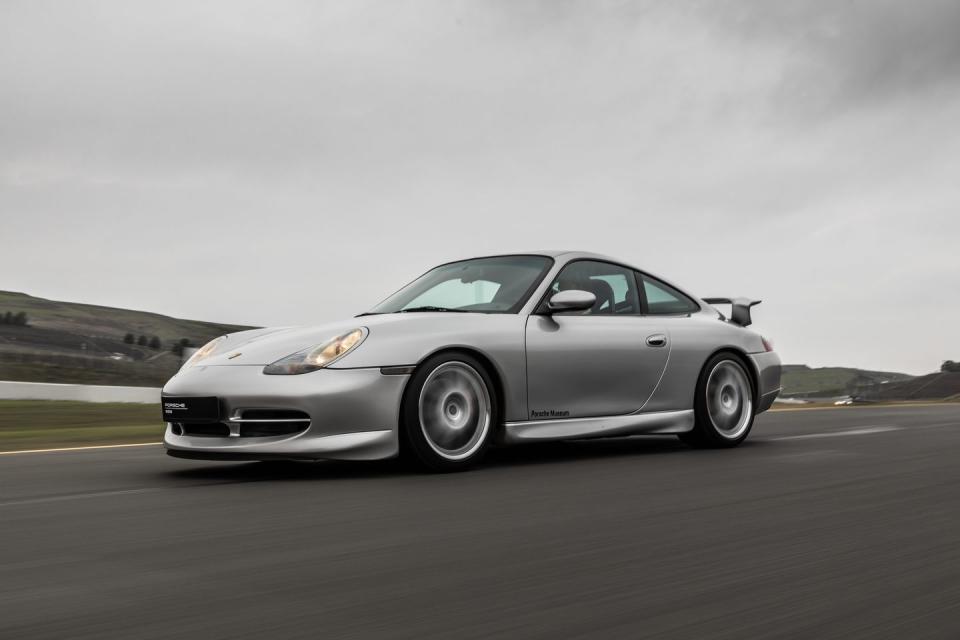
You Might Also Like

 Yahoo Autos
Yahoo Autos 